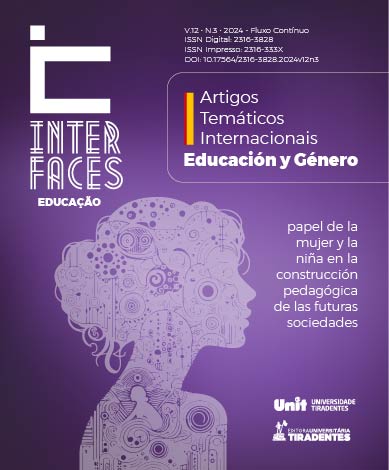ESTRATÉGIAS DE ENSINO E APRENDIZAGEM DE VOCABULÁRIO EM SEGUNDA LÍNGUA E O EMPREGO DAS EXPRESSÕES IDIOMÁTICAS
DOI:
https://doi.org/10.17564/2316-3828.2017v5n2p19-28Palavras-chave:
Segunda Língua, Expressões IdiomáticasPublicado
Downloads
Downloads
Edição
Secção
Licença
A Revista oferece acesso livre e imediato ao seu conteúdo, seguindo o princípio de que disponibilizar gratuitamente o conhecimento científico contribui para a democratização do saber. Assume-se que, ao submeter um artigo, o(a) autor(a) se reconhece como detentor(a) do direito autoral sobre ele e autoriza seu livre uso pelos leitores, podendo ser, além de lido, baixado, copiado, distribuído e impresso.Resumo
RESUMO
De acordo com Nation (2011), Schmitt (2000) e Richards (1976), a maior parte da pesquisa existente sobre ensino do vocabulário até o momento tem tido como foco a compreensão e a produção escritas. O presente estudo justifica-se por somar-se a outros trabalhos que enfocam as expressões idiomáticas, no escopo do ensino e da aprendizagem de línguas estrangeiras. Diante da necessidade de contribuir para estudos nessa área, o objetivo deste artigo é analisar a relação existente entre as estratégias de ensino e de aprendizagem de vocabulário e o emprego de expressões idiomáticas. Além disso, pretende-se analisar como o vocabulário está sendo enfocado em sala de aula e o consequente emprego das expressões idiomáticas nos livros didáticos de língua estrangeira.
Como Citar
Referências
REFERENCIAS:
ALMEIDA FILHO, J.C.P. Língua além de cultura ou além de cultura, língua? Aspectos do ensino da interculturalidade. Brasília. 2002.
GUMPERZ, J.J. On the ethnology of linguistic change. The Hague: Mouton.1966.
IRUJO, S. A piece of cake: learning and teaching idioms, ELT journal, vol 40(3), pp. 236-242. 1986.
IRUJO, S. Don’t put your leg in your mouth: Transfer in the acquisition of idioms in a second language - Tesol Quarterly – Wiley Online Library., 1986.
JOE, A. Vocabulary Learning and Teaching Activities. English Teaching Forum. Vol. 34. No 1. Jan-Mar., 1996.
MENDES, E.O. O português como língua de mediação cultural: por uma formação intercultural de professores e alunos de PLE. In. MENDES, E. (Org.) diálogos interculturais: ensino e formação em português língua estrangeira. Campinas. SP. Pontes Editores. P.139-158, 2011.
NATION, I.S.P. The Four Strands. Innovation in Language Learning and Teaching. Vol. 1, No 1, 2007.
_____________. Learning vocabulary in Another Language. Cambridge University Press, 2001.
____________. Research into practice: Vocabulary. Language Teaching, 44, pp.529-539, 2011.
_____________; CHUNG, T. Teaching and Testing Vocabulary. In.: LONG, M.; DOUGHTY, C.J. The Handbook of Language Teaching. Blackwell Publishing Ltd., 2009.
RICHARDS, J. C. The role of Vocabulary Teaching. Tesol Quarterly, Vol. 10, No. 1, Mar.1976
SASLOW, M.J; ASCHER, A. Top Notch 2nd edition, Pearson Publisher. 2011.
SCHMITT, N. Vocabulary in Language Teaching. Cambridge University Press. 2000.
___________. Current Perspectives on Vocabulary Teaching and Learning. In: CUMMINGS, J.; DAVISON, C.; The International Handbook of English. Chapter 50, 2007.
SINGLETON, D. Exploring the Second Language Mental Lexicon. Cambridge University Press. 1999.
KOVALEK, O. Estudos (inter)culturais em cadernos da língua inglesa da rede pública do estado de São Paulo. UFSCar- São Paulo- Dissertação-2013.
KRAMSCH, C. Context and culture in language Teaching. Oxford. Oxford University Press. 1993.
WALLACE, M.J. How to teach vocabulary. p.116-120, 1984.
WRIGHT J. Idioms Organizer. Commercial color press, London E7, 1999.
YORIO, C.A. Conventionalized language forms and the development of communicative competence. TESOL Quarterly, 14, p.433-442, 1980.


















